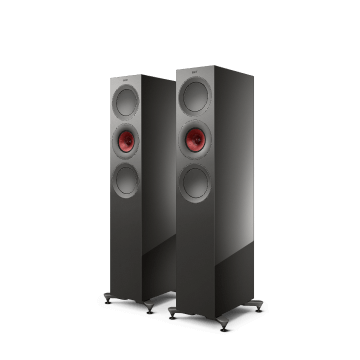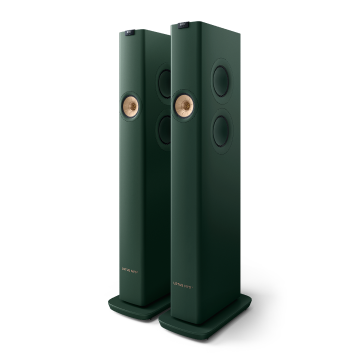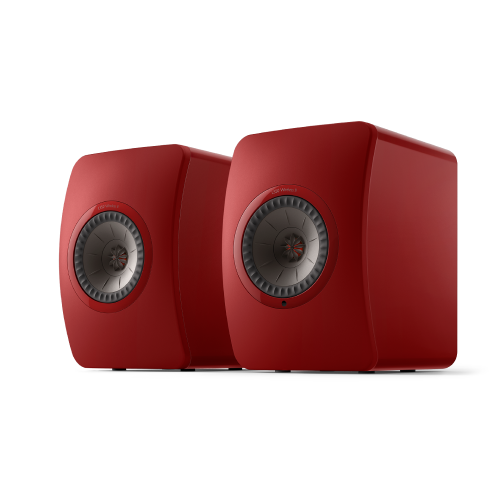Breaking in speakers - is it a seasoned audiophile's listening trick or a mere myth? When you invest in state-of-the-art new speakers, you want the sound to be as stunning and seamless as it can be. But can you expect your new speaker's audio to be flawless from first use or do they need to warm up? Well, whilst our KEF speakers do offer phenomenal audio performance from the very first time you listen, seasoned audiophiles may find that the experience becomes even better over time.
In this blog we'll cover how to break in speakers, how long it takes for your speakers to be fully run in and other tips on optimising your new speakers' sonic performance.
In this blog we'll cover how to break in speakers, how long it takes for your speakers to be fully run in and other tips on optimising your new speakers' sonic performance.
What is Speaker Break-In?
Do all speakers need to be broken in?
There are two common opinions when it comes to the need to burn in or break-in new speakers; the first being that it isn't required. This school of thought basically states that our ears become accustomed to the sound of our new speakers (making them seem to sound better) and that the overall performance of a speaker doesn't change perceptively with use.
On the other hand, some say that speakers have a better sound after several hundred hours of burn-in with a white noise generator and increasing amounts of bass-driven music. This school of thought believes that speakers must be broken-in sufficiently and properly in order for the performance of the speaker to be enjoyable to even the average listener.
As usual, the truth lies somewhere in the middle of these two thoughts.
With the materials being used in the construction of modern suspensions and surrounds, the performance of a speaker changes a little from its factory-fresh response. Out of the box, the moving parts of the speakers will be a little stiff, particularly in the bass drivers. After a period of time, these parts will loosen up and settle, resulting in deeper and tighter bass. This can definitely happen if you've auditioned a pair of well-played speakers at a retailer. In-store, they sounded great with a lot of punch and depth but at home, the bass of your brand-new speakers may sound less deep and not as well defined. This is because at the store, they had dozens, if not hundreds, of hours of play while your new out-of-the-box speakers are factory-stiff. While the effect of this is generally quite subtle, it's both easily measurable and perceivable.
On the other hand, some say that speakers have a better sound after several hundred hours of burn-in with a white noise generator and increasing amounts of bass-driven music. This school of thought believes that speakers must be broken-in sufficiently and properly in order for the performance of the speaker to be enjoyable to even the average listener.
As usual, the truth lies somewhere in the middle of these two thoughts.
With the materials being used in the construction of modern suspensions and surrounds, the performance of a speaker changes a little from its factory-fresh response. Out of the box, the moving parts of the speakers will be a little stiff, particularly in the bass drivers. After a period of time, these parts will loosen up and settle, resulting in deeper and tighter bass. This can definitely happen if you've auditioned a pair of well-played speakers at a retailer. In-store, they sounded great with a lot of punch and depth but at home, the bass of your brand-new speakers may sound less deep and not as well defined. This is because at the store, they had dozens, if not hundreds, of hours of play while your new out-of-the-box speakers are factory-stiff. While the effect of this is generally quite subtle, it's both easily measurable and perceivable.

How long does the break-in period typically last?
According to Dr Jack Oclee-Brown, Vice President of Technology at KEF: "The suspensions see the largest change, [as] they are made from impregnated textile and at a microscopic level the textile fibres pull apart a little when they are stressed, which leads to a softening. Break-in can take from a few hours to a few days. This depends mostly on the signal used for the break-in. Louder music will break in the drivers more quickly. As typically the bass drivers break in the most. Music with more bass will speed up the process too. The same effects can apply to headphone drivers too."
What happens during the speaker break-in process?
The suspensions and surrounds will deform as the signal is applied to the speaker, and that deformation causes the material making up the suspensions and surrounds to soften and become more flexible. It should be noted that the cones themselves do not deform and by "deform" we simply mean "change shape" to accommodate the movement of the speaker cone and voice coil.
The Science Behind Speaker Break-In
Do different speaker types require different break-in periods?
The break-in time depends on the materials being used for the rubber surrounds and suspensions. As there isn’t just one type of rubber, different rubber materials need different amounts of time to break-in, depending on the stiffness of the rubber used. Nitrile rubber, the type that we often use in our products, is a great material because it ages very, very slowly and has a great performance when used for surrounds. It may only take a few days (2-3) until the desired flexibility has been achieved by playing music at normal volumes, for a few hours a day.

Can speaker break-in affect the speaker's longevity?
Speaker break-in is just a term for the process that naturally takes place when the speaker is being used. If someone uses the speaker to listen to any sound, they’re effectively ‘breaking-in’ the speaker. That means that the break-in has no influence at all on the speaker’s lifetime.
Debunking Common Myths About Speaker Break-In
Do speakers break in on their own, or do they require a specific method?
Speakers simply ‘break-in’ just by using them, so there’s no specific method required. We always recommended handling your speakers with care and partnering them with high-quality compatible electronics. A speaker can be damaged from too much energy (listening to them at excessive volumes) and distortion from bad amplifiers.
Can you speed up the break-in process artificially?
The more energy someone puts in the speaker, the faster it will break-in. However, using high volume must be done with caution. We recommend using the speaker as you would do, without having ever heard about speaker break-in and enjoy a greater sound a few days later.
Tips for Maximising Speaker Performance
Should I follow specific guidelines for breaking in my speakers?
There are no special guidelines or rules to follow when breaking-in your speakers, apart from ensuring you’re not applying too much force i.e. listening to them at a very high volume.
What kind of audio content should I use during the break-in period?
We recommend listening to music with a wide spectrum of frequencies when breaking-in your speakers. Alternatively, you could use pink noise, although this may not be too pleasant to listen to. After getting your brand new speakers, you’ll likely be excited to put on your favourite playlist - so go ahead and use that!
Are there any risks associated with over-breaking-in speakers?
Moderate volumes should be used for breaking the speakers in. If music is loud or distorted, it can damage the speakers at any time, not just during the early days of use! Speakers are no different to any other electronic equipment; if you use them with care, you will enjoy being able to use them for a very long time.
After a new set of speakers but not sure what you’re looking for? Read our comprehensive HiFi speaker guide. For those looking for the convenience of wireless speakers, here’s everything you need to know about KEF Wireless HiFi Speakers.
After a new set of speakers but not sure what you’re looking for? Read our comprehensive HiFi speaker guide. For those looking for the convenience of wireless speakers, here’s everything you need to know about KEF Wireless HiFi Speakers.
Find My Retailer
Find out more about our award-winning models and book a demo at your nearest KEF retailer.
FIND MY RETAILER






